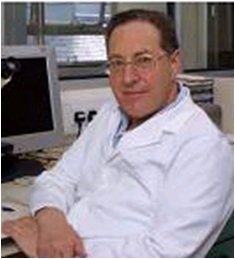 The big media news today about paralysis is actually a continuation of one of the scientific papers published last year in Cell Transplantation, but it is unique in many ways. “Transplantation of Autologous Olfactory Ensheathing Cells in Complete Human Spinal Cord Injury”.
The big media news today about paralysis is actually a continuation of one of the scientific papers published last year in Cell Transplantation, but it is unique in many ways. “Transplantation of Autologous Olfactory Ensheathing Cells in Complete Human Spinal Cord Injury”.
Here’s the links to todays media story about the success for Professor Geoff Raisman and the use of OEC in nerve grafting. I’m including the abstract from the new paper in Cell Transplantation along with a link to the full science paper. At the very bottom of the blog post I’ve also put the full one hour BBC documentary video presentation that explains more about the human study case.
Abstract: Treatment of patients sustaining a complete spinal cord injury remains an unsolved clinical problem because of the lack of spontaneous regeneration of injured central axons. A 38-year-old man sustained traumatic transection of the thoracic spinal cord at upper vertebral level Th9. At 21 months after injury the patient presented symptoms of a clinically complete spinal cord injury (American Spinal Injury Association class A-ASIA A). One of the patient’s olfactory bulbs was removed and used to derive a culture containing olfactory ensheathing cells and olfactory nerve fibroblasts. Following resection of the glial scar the cultured cells were transplanted into the spinal cord stumps above and below the injury, and the 8 mm gap bridged by 4 strips of autologous sural nerve. The patient underwent an intense pre- and post-operative neurorehabilitation program. No adverse effects were seen at 19 months postoperatively, and unexpectedly, the removal of the olfactory bulb did not lead to persistent unilateral anosmia. The patient improved from ASIA A to ASIA C. There was improved trunk stability, partial recovery of the voluntary movements of the lower extremities, and an increase of the muscle mass in the left thigh, as well as partial recovery of superficial and deep sensation. There was also some indication of improved visceral sensation and improved vascular autoregulation in the left lower limb. The pattern of recovery suggests functional regeneration of both efferent and afferent long-distance fibers. Imaging confirmed that the grafts had bridged the left side of the spinal cord, where the majority of the nerve grafts were implanted, and neurophysiological examinations confirmed the restitution of the integrity of the corticospinal tracts and the voluntary character of recorded muscle contractions. To our knowledge, this is the first clinical indication of beneficial effects of transplanted autologous bulbar cells.
The Triple JJJ – Radio Hack Show with Stephen Davies for an opinion on the SCI project
To Walk Again: People Behind the Story
The Daily UK: Maybe this operation actually took place 10 years ago, but there are differences!
